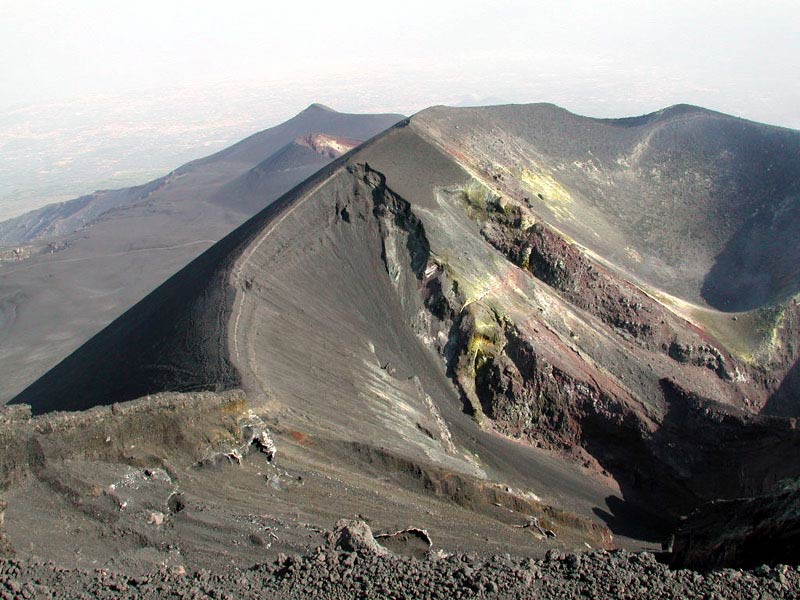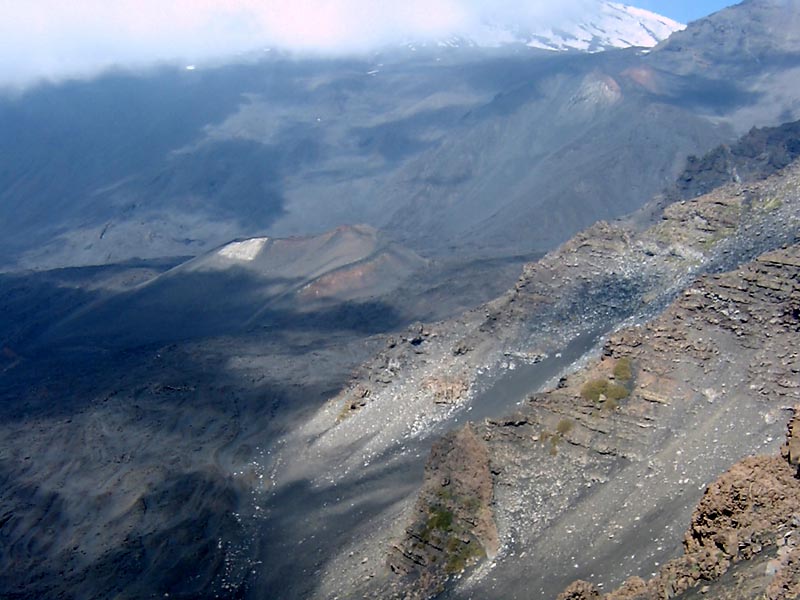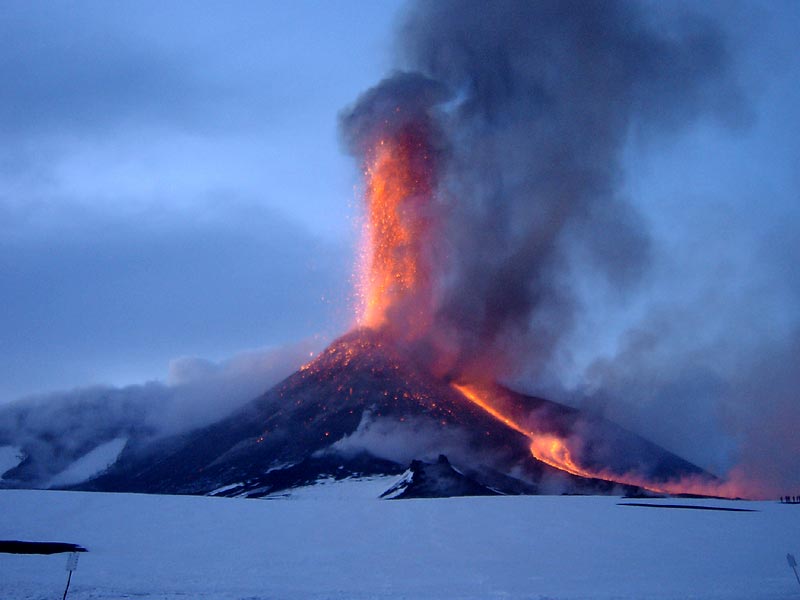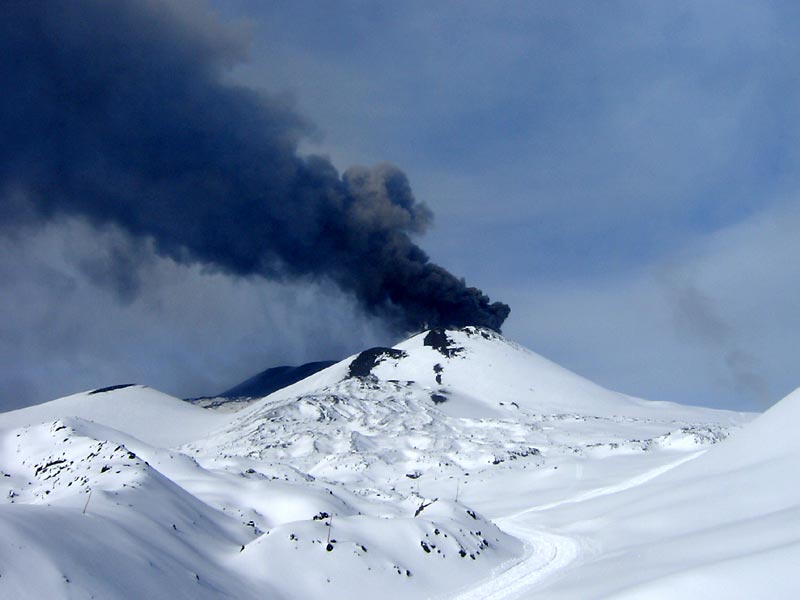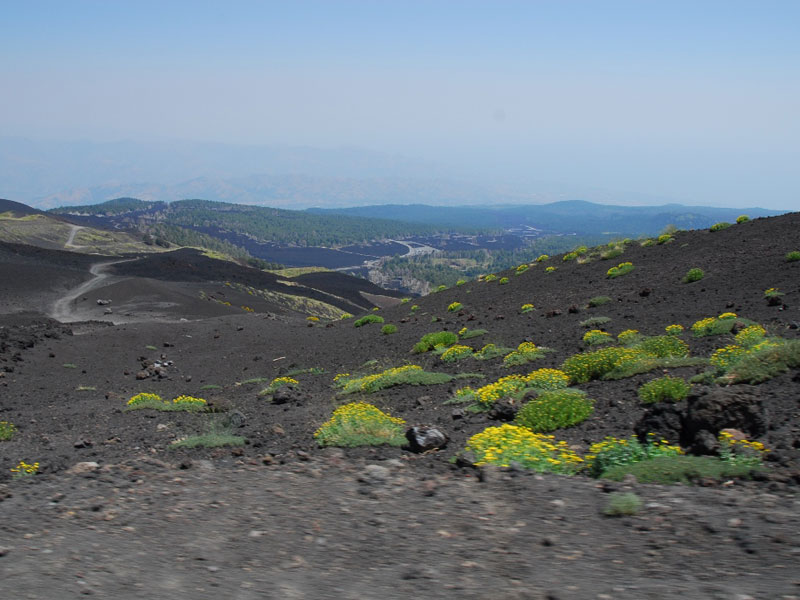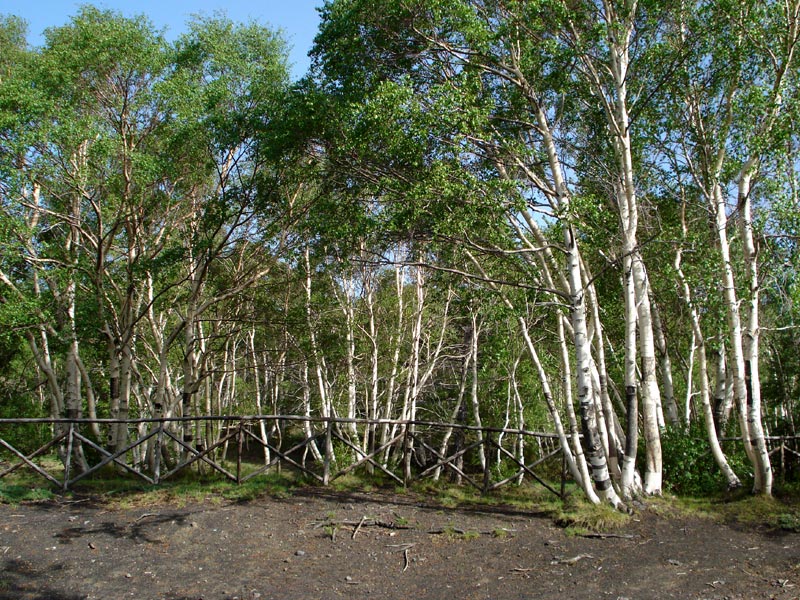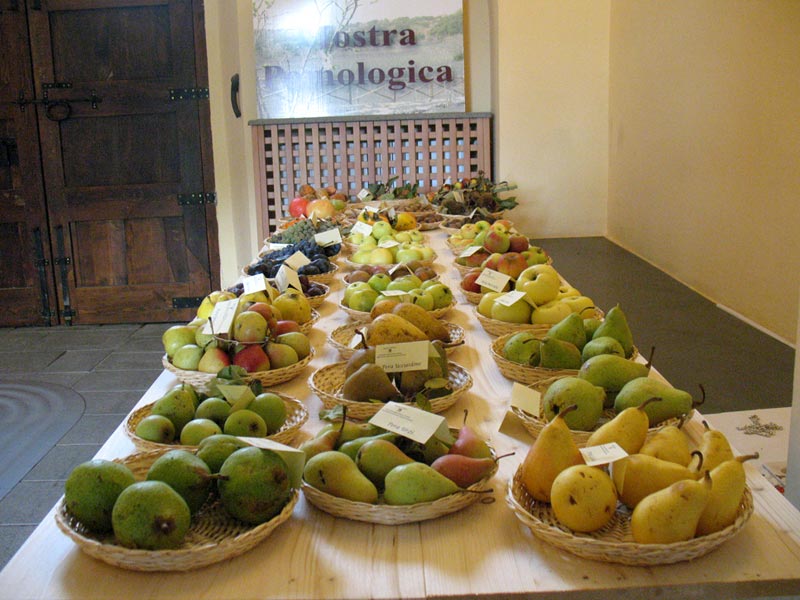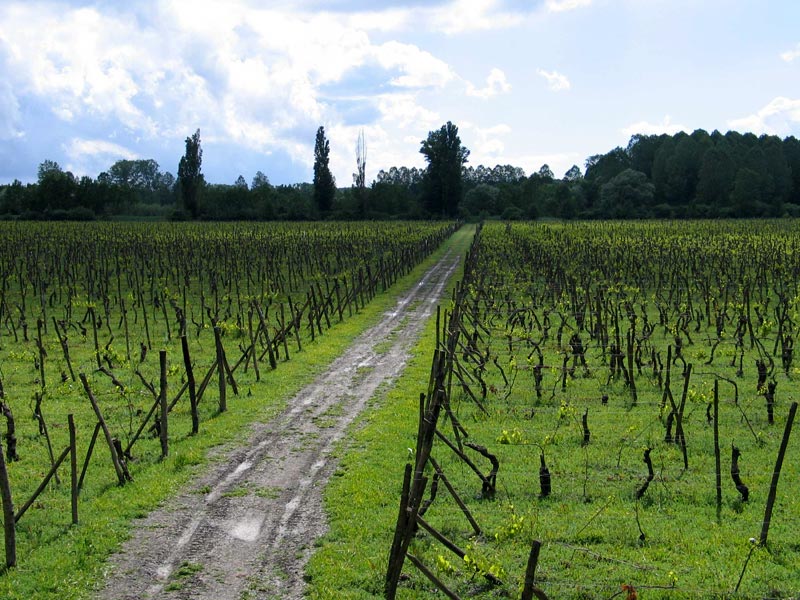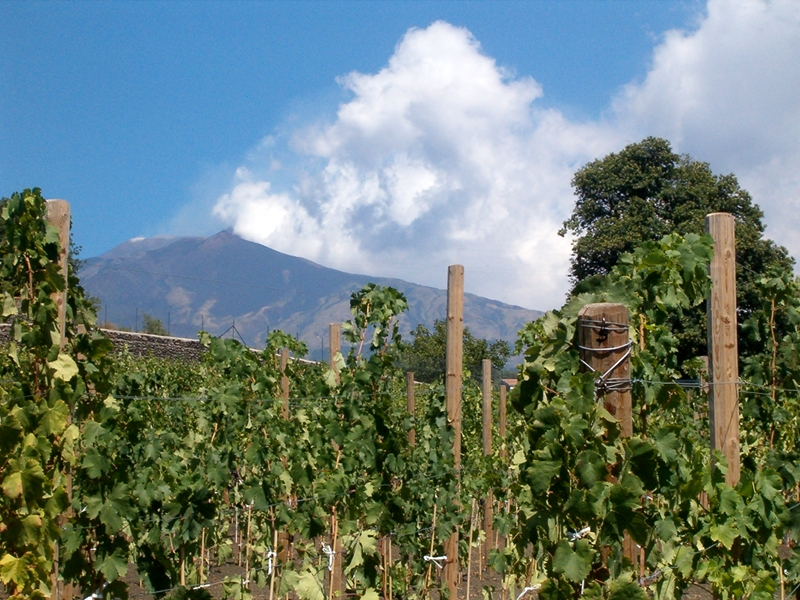Protected Area
Identity Card
- Land Surface Area: 58'095.00 ha
- Regions: Sicilia
- Provinces: Catania
- Municipalities: Adrano, Belpasso, Biancavilla, Bronte, Castiglione di Sicilia, Giarre, Linguaglossa, Maletto, Mascali, Milo, Nicolosi, Pedara, Piedimonte Etneo, Ragalna, Randazzo, Sant'Alfio, Santa Maria di Licodia, Trecastagni, Viagrande, Zafferana Etnea
- Establishment Measures: DPRS 37 17/03/1987
- PA Official List: EUAP0227
- Park Authority: Ente Parco dell'Etna
Etna Park
Etna Park was the first Park established in Sicily in March 1987. And not by chance. As a matter of fact, Etna is not only the highest active volcano in Europe, but also a mountain with recent lava flows where no form of life has settled yet and very ancient lava flows housing natural fomations of Austrian pines, beech trees, and birches.
To protect this unique and extraordinary landscape marked by the presence of man, Etna Park has been divided into four areas.
In the "A" area, 19,000 ha that are almost all public property, there are no human settlements. It is the area of the big uncontaminated spaces, the realm of big birds of prey like the Golden Eagle.
The "B" area, 26,000 ha, is partly formed by small private agricultural lots and is characterized by wonderful examples of rural houses, shelters for animals, palm groves, and noble houses witnessing the ancient and current human presence. Besides the "A" and "B" Park areas, there is a pre-Park area in the "C" and "D" areas: 14,000 ha, to guarantee the presence of eventual tourist facilities in the respect of the safeguard of landscape and nature.
Geology
Etna represents a special "astenospheric window" caused by the process of lithospheric convergence between Africa and Eurasia and its structural evolution deeply linked to the geodynamics of the Mediterranean basin. With its 135 km of perimeter, it developed, changed, was destroyed, and reconstructed with several geological events that followed each other throughout many dozens of thousand years. The beginning of the fascinating history of this volcanic group dates back to the middle-lower Pleistocene: 570,000-600,000 years ago, when the first eruptions took place. At that time, the area where today we see the towns of Acicastello, Acitrezza, and Ficarazzi was covered by a large sea gulf interested by an intense underwater volcanic activity. A lot of time later, through long and linear eruptive fissures, large lava fields formed: today, these fields can be found in the terraces situated at various altitudes in the geographical area where the towns of Valcorrente, S. Maria di Licodia, Biancavilla, and Adrano are situated. Afterwards, a central-like volcanism action followed, leading to the formation of imposing volcanic structures known as Calanna, Zoccolaro, Trifoglietto, Vavalaci, Cuvigghiuni, Pirciata, Giannicola, Ellittico, Mongibello.
Serra del Salifizio and Serra delle Concazze delimit the huge natural amphitheater of Bove Valley, characterized by its horseshoe shape (covering a surface area of over 37 square km). This fascinating and wild natural environment with its overhanging walls, the heads of ancient lava banks, rocky cliffs, magmatic formations, gullies, eruptive structures, and lava flows represents the geological evidence of the polygenesis of Etna.
Variously disarticulated scoria-like blocks and fragments with a crest-like morphology and tapered depressions marking the channels along which the lava flows (aa lava); curled surface areas simulating festoons or formed by a thick plot of lava strings creating bizarre patterns (pahoehoe lava); variously disarticulated and piled slabs originating tumuli-shaped mountains or ridges; more or less regular flat slabs created by the immediate cooling of fluid lava suddenly raised by the action of big gas "bubbles" (pillow lava); often, on these formations, systems of lava flow enclosed in a basaltic cover form: in the latest period of the effusive activity, they empty giving origin to tubes, caves, and flowing galleries.
Fauna
About one and a half century ago, Galvagni, describing the wildlife of Etna, talked about the presence of animals which nowadays have almost disappeared such as wolves, wild boars, fallow deer, and deer. The opening of new roads, deforestation, and hunting activities contributed to the extinction of these big mammals and continue to threaten the life of other species. In spite of this, porcupines, foxes, wild cats, martens, rabbits, and hares can be seen on the volcano together with weasels, hedgehogs, dormice, and several species of mice and bats.
In the area, many bird species live. In particular, birds of prey which witness the existence of large uncontaminated sites. Among the diurnal birds of prey, there are sparrow-hawks, buzzards, kestrels, peregrines, and the golden eagle. The nocturnal birds of prey include the barn owl, the scops owl, the tawny owl, and the long-eared owl. Herons, ducks, and other aquatic birds can be observed in Gurrida Lake, the one and only stretch of water in the mountain area of Etna.
In the woodlands, it is possible to sight jays, rock pigeons, and the rock partridge, as well as many song birds like the warbler, the tit, the cuckoo, and many others. In the upper areas, around the lava fields, the wheatear will surprise you with its rapid and irregular flying style. Among the various snake species populating the woodland with green lizards and lizards, the most dangerous snake is the viper, whose presence has increased in recent years because of a decrease in its predators. The world of insects is also worth a mention: butterflies, grasshoppers, crickets, locusts, bees, etc. with their essential role in the ecological balance.
Vegetation
The vegetation of Etna Park is characterized by a series of factors, first of all the volcanic nature of the mountain. The Park flora is extremely rich and varied, and shapes the landscape with its continuous changes. This depends on the compactness of the soil and the continous changes in the substrate due to different lava flows, as well as on the variability of the temperature and rainfall in relation to altitude and slopes. In the lower areas, once characterized by holm oak forests, there are vineyards, hazelnut tree groves, oak forests, apple and chestnut tree orchards. At 2,000m asl or even higher, it is possible to find the beech tree, reaching in Sicily its southernmost distribution limit, and the birch, considered by most of the authors an endemic species.
Beyond the woodlands, the landscape changes and gives way to astragalus formations offering shelter to other mountain plants, like senecio, violets, and cerastium. Beyond the limit of astragalus, between 2,450 and 3,000m asl, there are a very few elements able to survive in the harsh environmental conditions of Mt. Etna. Beyond this level and up to the summit, no vegetable species can survive.
Agriculture
Since ancient times, the richness of the volcanic soil has given the opportunity to the inhabitants of the area of Etna to live on agriculture and breeding, creating a human environment in harmony with the natural environment. Surprising and manifold agricultural landscapes are set among woods and lava flows, giving origin to an environmental mosaic of great beauty.
The millenary presence of man on the volcano has left a deep sign: the slopes of the "Mountain" are scattered with monumental terracing works, storehouses, millstones, and wine-processing structures. Therefore, the maintenance and recovery of agriculture practiced in tune with the needs of environmental safeguard becomes an efficient instrument to maintain an important part of the landscape of Etna. In this context, Etna Park considers with particular attention organic agriculture, a cultivation method able to offer healthy products in the respect of the environment and of the health of the farmers.
Today vineyards, olive groves, pistachio groves, hazelnut tree groves, and orchards surround the volcano, witnessing a widespread agricultural vocation of the area characterized by the presence of particularly interesting local varieties. It is enough to mention the apples Cola, Gelato and Cola-Gelato, small, yellow, and fragrant or the autumn pears like Ucciardona or Spinella used in traditional cooking. The richness in varieties of the species cultivated on Etna is a biodiversity heritage to safeguard and promote to maintain an important inheritance that could become the characteristic feature of the Park agriculture.
Wine Growing
The particular microclimate of the territory of Etna has characterized vine cultivation and wine production since ancient times. The local inhabitants owe to the vine and to wine an essential part of their civilization. Throughout the centuries, the vineyards of Etna have been subject to several and deep changes, and have become a characterizing feature of the human landscape. Etna wine growing, linked to the hills and to the mountains, develops on terraced areas of small and medium width. Usually, in the vineyards, it is possible to find rural structures that can include the so-called "palmenti" (part of the building used for the grapes processing) and cellars.
A DPR of 1968 awarded the wines of Etna the label DOC "Etna" (White Superior, White, Red, and Rosé), involving the territory of 21 local Municipalities. Out of them, 17 are Park Municipalities.
The Park Authority, aiming at the integration between environmental protection and promotion of economic activities, safeguards and promotes the local wine growing as a "priceless inherited heritage" to preserve, enhance, and promote as economic field of major importance. This aim can be achieved safeguarding the environmental and cultural heritage of Etna, stimulating the improvement and the stabilization of the quality parameters of the production, and promoting the image of the product linked to its territory. Hand in hand with several technical-administrative initiatives dedicated to the field and after joining Bodies like CERVIM (Center of Research, Study, and Enhancement for Mountain Wine Growing), the National Association "Città del Vino", and "Strada del Vino dell'Etna", the Park Authority promotes several events of great regional, national, and international interest.




